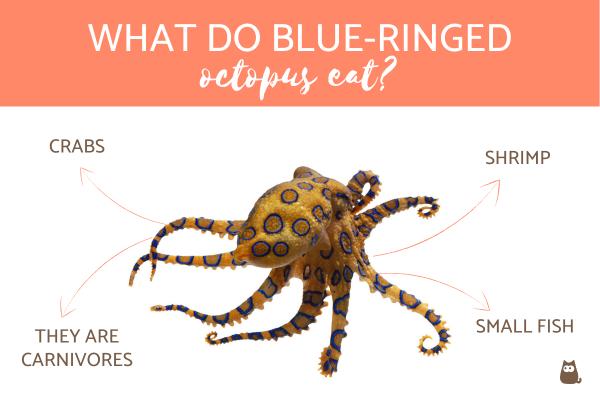
Blue-ringed octopus are small and adorable octopus mostly found in Australia's coral reef. Despite their innocent appearance, these little sea creatures are actually quite dangerous.
In this AnimalWised article, we're going to dive deeper into blue-ringed octopus, what they eat, their toxicity and more!
Blue-ringed octopus
Blue-ringed octopus (Hapalochlaena) are four highly venomous species of octopus found in tide pools and coral reefs of the Pacific and Indian Oceans, from Japan to Australia. These octopus are bottom dwellers inhabiting sandy and silty areas in shallow coral reefs, tidepools, and clumps of algae. They like to hide in rock crevices, inside empty seashells, and in discarded bottles and cans.
The different species of blue-ringed octopus are:
- Greater blue-ringed octopus (Hapalochlaena lunulata)
- Southern blue-ringed octopus or lesser blue-ringed octopus (Hapalochlaena maculosa)
- Blue-lined octopus (Hapalochlaena fasciata)
- Hapalochlaena nierstraszi
These small octopus are 12-20cm (5-8 inches) in size. They are easily identified by their yellow-ish skin that also has blue and black rings that change colour when the animal is threatened. In the wild, these animals have an average lifespan of 2 years, however this depends on their quality of life in their natural habitat.
Learn more in our article about 20 amazing octopus facts.

What do blue-ringed octopus eat?
Blue-ringed octopus are carnivores, which means that their diet is based on meat. These octopus mostly feed on crabs and other small crustaceans, hermit crabs, shrimp and other small sea animals. However, they are primarily crab-eaters.
Want to learn more? Check out our article about the different types of crabs.
How blue-ringed octopus hunt
These octopus usually hunts during the day. They are ambush predators as they usually pounce on their hard-shelled prey, they trap it with their arms and use their sharp parrot-like beak to pierce a hole in the prey’s shell or exoskeleton.
Enzymes in their saliva partially digests the remaining flesh which the octopus sucks out, leaving the shell behind.
Blue-ringed octopus digestion
As we know, these octopus are carnivores. Due to this type of diet, their metabolism is highly dependent on protein, since it is the main component of an energy source and as a tissue builder. The digestion process is carried out in two stages:
- Extracellular phase: this occurs throughout the entire digestive tract. This is when the beak and the radula act, which is endowed with strong muscles with which they can project out of the mouth. This way they act as a scraper apparatus. At the same time, the salivary glands secrete enzymes that start a predigestion of food.
- Intracellular phase: the second phase occurs exclusively in the digestive gland. This is when the predigested food passes into the esophagus and then into the stomach. Here, the food mass continues its degradation thanks to the presence of cilia. Once this occurs, the absorption of nutrients takes place in the digestive gland, to then transport the undigested material to the intestine, through which it will be disposed of in the form of fecal pellets, that is, balls of undigested food.

Can blue-ringed octopus kill you?
Yes, blue-ringed octopus are highly venomous octopus. In fact, these little octopus hold enough venom to kill 26 humans within minutes. Their bites are tiny and often painless,
If you're able to get intubated and put on a ventilator in time, you may be able to survive the venomous bite.
It's important to state that these animals will not attack for no reason. In fact, their first reaction is always to flee away from danger. However if you persist, these tiny octopus will resort to their venom in order to escape danger.
Therefore, if you're a scuba diver and you observe one of these adorable little octopus, admire them from afar. Don't corner them and don't touch them. Keep in mind that they are very small sea creatures that can feel threatened by a human coming near them, especially if there's more than one and they feel cornered or if you touch them, or even try to pick them up.
You may also be interested in our article about the most dangerous animals in Australia.
If you found this article useful, you may also be interested in our video about the 7 rarest marine animals.

If you want to read similar articles to What Do Blue Ringed Octopus Eat?, we recommend you visit our Facts about the animal kingdom category.
- García, LEI (2018). Digestive physiology and nutrition of the octopus Octopus bimaculoides . University thesis.
- War, Á. (1978). On the feeding and feeding behavior of Octopus vulgaris . Research work.
- Josef, N., Amodio, P., Fiorito, G., & Shashar, N. (2012). Camouflaging in a complex environment — octopuses use specific features of their surroundings for background matching . PLoS One, 7 (5), e37579.